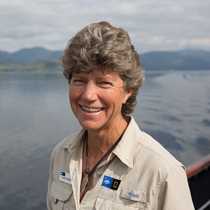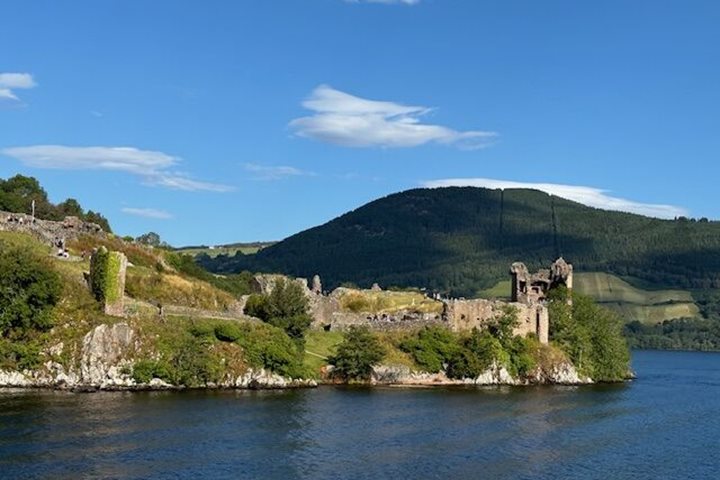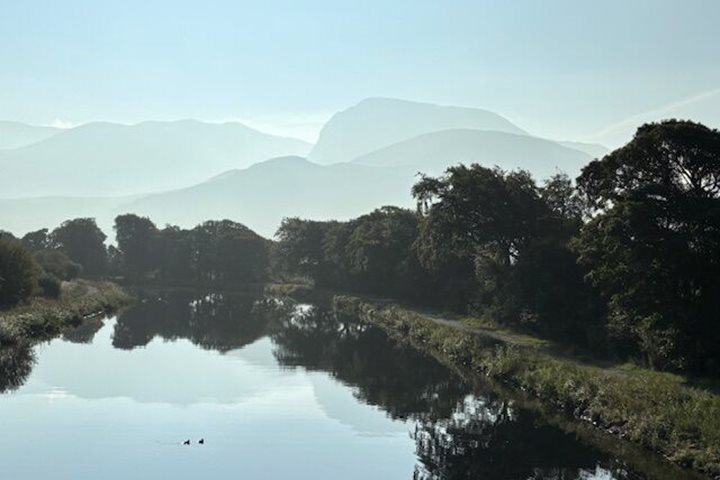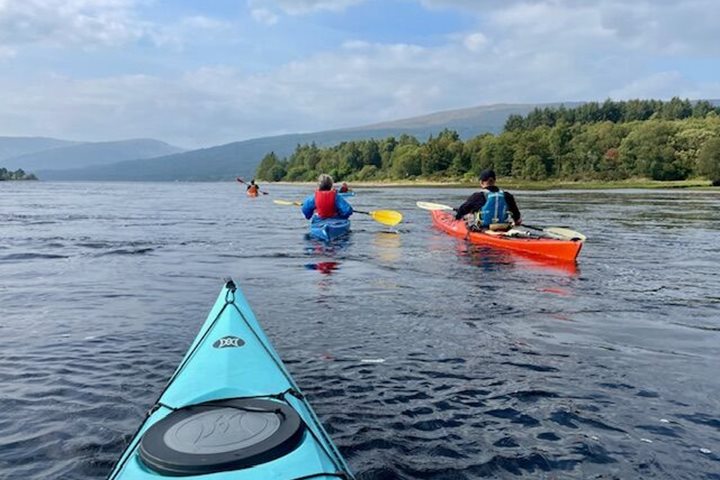Early morning, before most of our group was awake, Lord of the Glens sailed out of Tobermory harbor bound for Craignure, a village further south on the Isle of Mull. Craignure’s pier is a landing point for the large CalMac ferries that connect the Hebridean islands to mainland Scotland, and we saw many of the big ships pass by. At Craignure, we disembarked to board a bus for the Isle of Iona, a small island off the tip of Mull. It took a 45-minute bus ride to Fionnophort village, then a short ferry journey across a channel to reach Iona. Our bus driver Sheila skillfully maneuvered the bus along the miles of one-lane roads, where frequent passing zones (small pullouts) allow cars and other big vehicles to pass each other. Sheila provided an engaging commentary, filled with the history and local stories of Mull, then dropped off us to catch our ferry to Iona.
Iona has been a spiritual site for centuries. St. Columba came to the island from Ireland in 563 B.C. and established a monastery, spreading the Celtic Christian faith out from the remote location. During the 13th century, Iona became home to the Benedictines, and the great abbey and nunnery were constructed. The island remains a destination for pilgrims, who have been coming to the island since St. Columba’s time. In the morning, our group had a chance to explore the abbey grounds and visit the graveyard where several of Scotland’s royalty are said to be buried, including Macbeth. A delicious lunch followed at the Columba Hotel, complete with greens from the hotel’s own organic garden. A warm, dry afternoon allowed some of us to walk with David and Robin around the island’s interior, others to continue honing their photographic skills with Ian, and the rest to enjoy meandering the streets and shops of Iona’s tiny village.
Mid-afternoon, we made our way from Iona, back across Mull to Duart Castle, an imposing structure perched on dark cliffs overlooking the sea. Constructed in the mid-1200s, the castle is the ancestral home to the Maclean Clan. The Macleans restored the castle in the early 1900s so that it can now be used as a residence, but is open for visitors to explore many of the rooms and narrow, spiral staircases. From Duart, it was back to Lord of the Glens, where a calm sunny evening made our evening voyage from the Isle of Mull over to mainland Oban a pleasant and scenic trip, surrounded by a sparkling ocean with coastal lands of rolling green hills. After dinner, the good weather continued, and many took the opportunity to disembark and enjoy an evening stroll through Oban’s streets or along the seaside promenade, ending another day full of history, scenery, and the beauty of Scotland.







